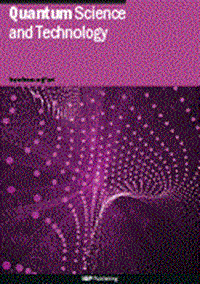原子干涉引力波探测器的空间和脉冲效率约束
IF 5
2区 物理与天体物理
Q1 PHYSICS, MULTIDISCIPLINARY
引用次数: 0
摘要
目前计划和建造的基于差分光脉冲原子干涉测量的引力波和暗物质地面探测器的设计围绕三个主要策略来提高它们的灵敏度:(i)使用多个钻石的共振模式增强,(ii)大动量传递(LMT)技术来增加干涉仪内的臂分离,以及(iii)增加两个干涉仪之间距离的超长基线方案。共振模式增强和LMT技术都会产生更多的光脉冲,使原子光相互作用期间的高脉冲保真度势在必行。同时,增加垂直结构中钻石的数量会导致更高的原子喷泉,从而减少干涉仪之间的可用距离。因此,钻石数量,LMT脉冲和喷泉高度是相互依存的参数,必须仔细平衡。在这项工作中,我们提出了共振模式下多金刚石几何形状的最佳配置,明确考虑了单个干涉仪的空间范围,考虑了基线尺寸和不完美脉冲引起的原子损耗的约束。为了进行优化,我们对原子云的初始位置和动量、传递动量和循环数等相关参数进行了数值扫描。对于每个参数集,我们验证是否满足所施加的条件,并评估结果的灵敏度以确定最佳配置。我们提供了实用的分析关系来估计应该应用的最佳脉冲数。许多超出演示实验的建议需要脉冲数,这需要的效率尚未用最先进的动量传递技术证明。结果,观察到的灵敏度低于预期——这是由臂分离和每个脉冲的原子损失共同引起的——这突出表明迫切需要进行旨在提高脉冲保真度的研究。本文章由计算机程序翻译,如有差异,请以英文原文为准。
Spatial and pulse efficiency constraints in atom interferometric gravitational wave detectors
Currently planned and constructed terrestrial detectors for gravitational waves and dark matter based on differential light-pulse atom interferometry are designed around three primary strategies to enhance their sensitivity: (i) Resonant-mode enhancement using multiple diamonds, (ii) large-momentum-transfer (LMT) techniques to increase arm separation within the interferometer, and (iii) very-long baseline schemes that increase the distance between the two interferometers. Both resonant-mode enhancement and LMT techniques result in a greater number of light pulses, making high pulse fidelity during atom-light interactions imperative. At the same time, increasing the number of diamonds in vertical configurations leads to taller atomic fountains, which consequently reduces the available distance between interferometers. As a result, the number of diamonds, LMT pulses, and the fountain height are interdependent parameters that must be carefully balanced. In this work, we present optimal configurations for multi-diamond geometries in resonant mode, explicitly accounting for the spatial extent of a single interferometer, considering constraints imposed by the baseline dimensions and atomic losses due to imperfect pulses. For this optimization, we numerically scan the relevant parameters such as initial position and momentum of the atomic cloud, transferred momenta, and number of loops. For each parameter set, we verify whether the imposed conditions are met and evaluate the resulting sensitivities to identify optimal configurations. We provide practical analytical relations to estimate the optimal number of pulses that should be applied. Many proposals beyond demonstrator experiments require pulse numbers that demand efficiencies not yet demonstrated with state-of-the-art momentum transfer techniques. As a result, the observed sensitivity falls short of expectations—an effect caused by both arm separation and atom loss per pulse—highlighting the urgent need for research aimed at improving pulse fidelities.
求助全文
通过发布文献求助,成功后即可免费获取论文全文。
去求助
来源期刊

Quantum Science and Technology
Materials Science-Materials Science (miscellaneous)
CiteScore
11.20
自引率
3.00%
发文量
133
期刊介绍:
Driven by advances in technology and experimental capability, the last decade has seen the emergence of quantum technology: a new praxis for controlling the quantum world. It is now possible to engineer complex, multi-component systems that merge the once distinct fields of quantum optics and condensed matter physics.
Quantum Science and Technology is a new multidisciplinary, electronic-only journal, devoted to publishing research of the highest quality and impact covering theoretical and experimental advances in the fundamental science and application of all quantum-enabled technologies.
 求助内容:
求助内容: 应助结果提醒方式:
应助结果提醒方式:


